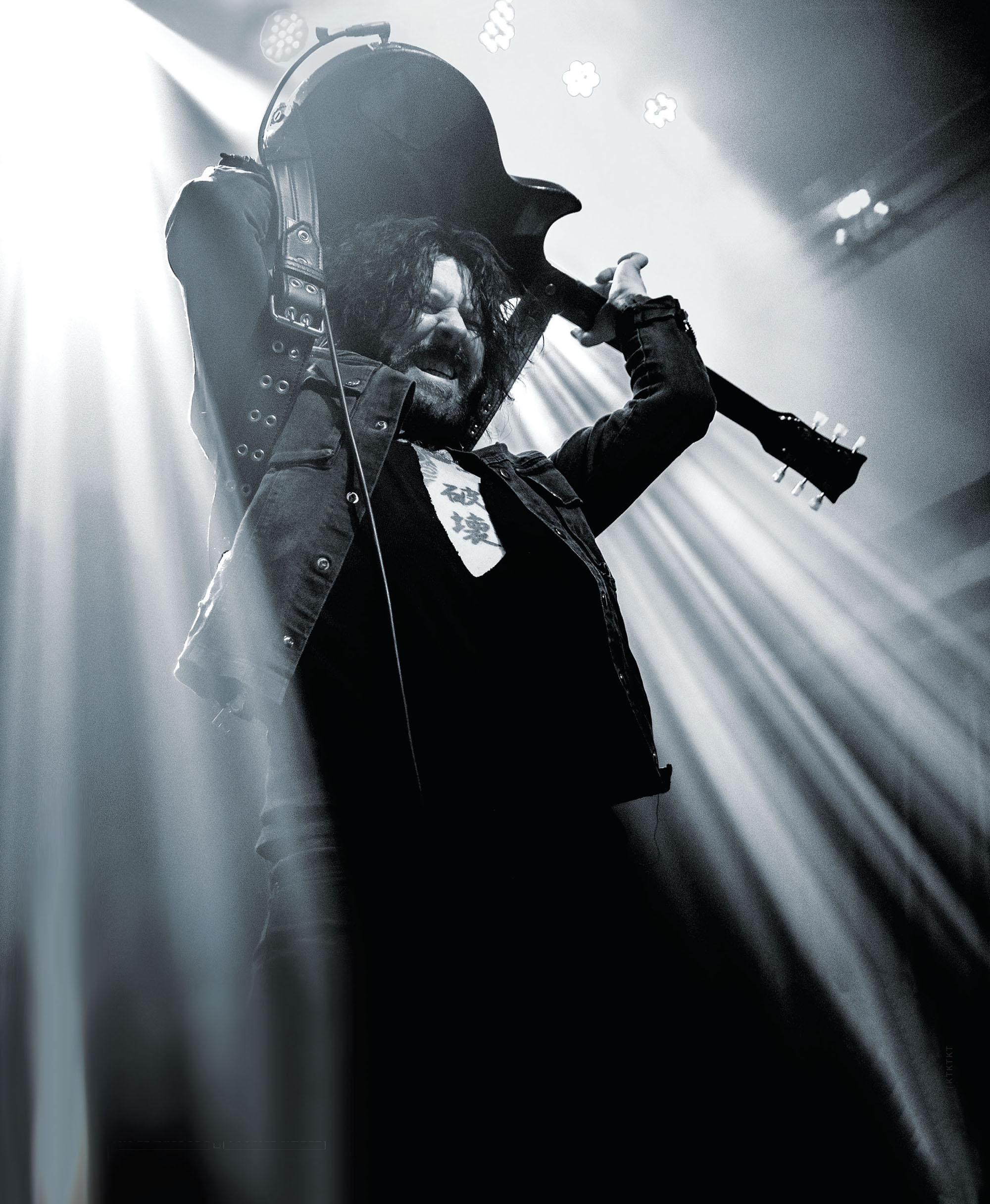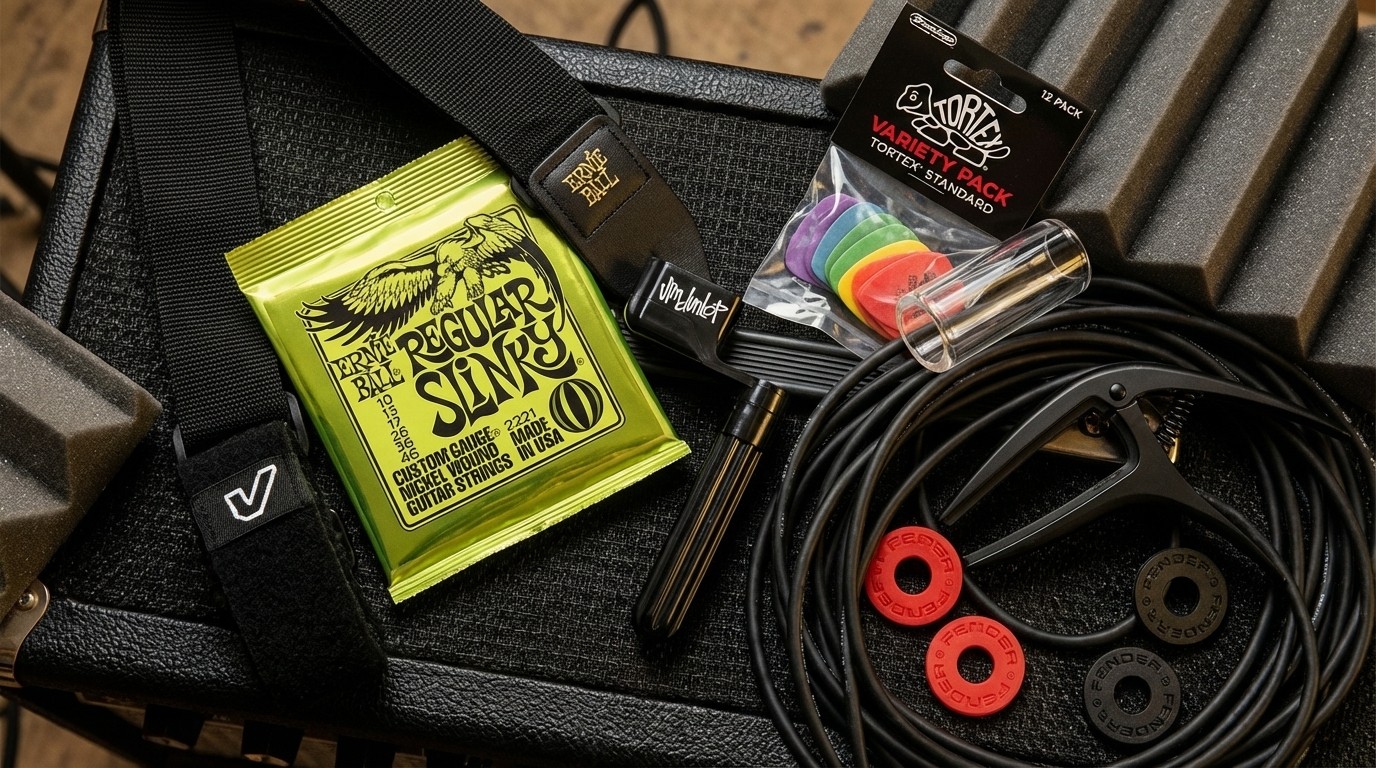Tracii Guns Talks GNR, Gear and L.A. Guns' New Album, 'The Missing Peace'

Was it weird for you when L.A. guns were out touring and you weren’t in it? The band is named after you! —Liam Hendrickson
No weirder than Guns N’ Roses, you know? [laughs] But, I mean, when you create stuff and you walk away from it, you don’t want it to fail. Because then your legacy is a bunch of failures. The thing that bothered me the most in that time, and the reason that I ultimately had to get away from it, was that there was poison running the business and running the perception of the band right into the ground. Out of desperation for cash. I just watched it go down, down, down. But, yeah, I felt weird about it!
It’s so awesome that you and singer Phil Lewis are back together in L.A. Guns. What led to the reunion? —Tim Florian
Phil and I, we never had a serious issue—there was other poison in the water that kind of drove a wedge between us. That’s the best way to describe it. And Phil didn’t really recognize what the wedge was until way later. But we started talking again in 2013, and then a few years later, at the end of 2015, we were asked to do a set together for the 25th anniversary of the Hard Rock Café in Las Vegas. And he had come up onstage with me right before that—I had done a Toys for Tots benefit and he came up unexpectedly and we did some stuff . At that point I thought, This sounds like L.A. Guns. This is where it’s at.
But I didn’t want to push it, because I really wasn’t interested. But then when we did the Hard Rock thing, it was beyond packed. It was insane. So there was a lot of ego massaging going on, and we got some really good reviews. And then offers started coming in to do real shows. Eventually I had record companies calling me: “Hey, now you and Phil should do a record!” And it was like, “Hold on, here…” And Phil was in an odd position because he was still in L.A. Guns, the version at the time. But I sent him some music and he called me back and he goes, “Oh, wow. Okay. I see what you’re talking about…”
And that was when it happened. We said, “Hey, this is real. Let’s take one of these deals and let’s make a record.” And so Phil let the other guys know, “Hey, I’m outta here. I’m going to go do L.A. Guns the right way.” And I suggested he take [guitarist] Michael Grant, who was Filling in for me in that band and who’s just an amazing spirit, with him. And that’s how we did it. It was seamless, painless, and definitely the right thing to do. It’s a very happy family now.
The new record, The Missing Peace, is killer. How did it come together? —Mike Holloway
All the latest guitar news, interviews, lessons, reviews, deals and more, direct to your inbox!
Well, the greatest thing about not doing new L.A. Guns music for over 10 years was being able to look at what L.A. Guns really is, musically. And the strongest element of L.A. Guns is that sleaze/hair metal kind of dark thing that we did. Taking some elements of punk rock and mixing them with classic rock and speeding all that shit up. Then we also had great success with songs like “Over the Edge,” that are more kind of epic in feel. So songs on the new record like “It’s All the Same to Me” and “Speed,” those are classic L.A. Guns. “Speed” was actually something I had in a folder on my computer called “Bad Eighties Riff.” And I thought, What’s “Bad Eighties Riff”? And I opened it up and I went, “Wow, this is ‘Badass Eighties Riff’!” But, you know, at the time I wrote it I was probably just nauseated by the whole situation and put it away. But I’m glad I listened to it, because “Speed” is a damn fine representation of L.A. Guns.
And then Michael [Grant] wrote “Don’t Bring a Knife to a Gunfight” and “The Devil Made Me Do It,” and Johnny [Martin, bass] wrote the music for “Baby Gotta Fever,” which is a perfect representation of that L.A. Guns snotty riff-rock thing. Then “Kill It or Die,” “A Drop of Bleach,” they’re kind of like Hollywood Vampires-era L.A. Guns. And at the end of the record there’s some really big classical-influenced pieces of music that I actually originally wrote for Quiet Riot in 2005. So I just put everything together and we took it from there.
You helped form Guns N’ Roses in the mid Eighties. How did you first meet Axl Rose?
—Jordana Colvan
I first met Axl from Izzy [Stradlin]. Izzy always told me, “Yeah, you know, I have this buddy in Indiana. He can really sing. I’m gonna bring him out here.” Izzy was living at my mom’s house. I was about 16 or 17 and he was about 19 or 20. And so eventually Axl came out and they put together, I think it was probably Hollywood Rose. And then L.A. Guns and Hollywood Rose and Poison did a show—our first show—together at Madame Wong’s West. Poison played upstairs in the big room and L.A. Guns and Hollywood Rose played in the small room downstairs and that was really the first day I heard Axl sing. It was at soundcheck. And I was like, “Holy shit!” He was incredible. We became friends after that, and within the next six months he ended up singing for L.A. Guns. And we eventually changed that into Guns N’ Roses. I was in that version of Guns N’ Roses for about eight months and then I took off to do L.A. Guns again.
What was your main guitar setup on the new record? —Anders Roil
The new record is pretty specific. The brass tacks in the amplification for the heavy stuff was a Bugera 1960, which is basically a plexi clone, into a Marshall basketweave cab with 30-watt Greenbacks. And the amp was set up basically clean—big and loud and not much distortion. Then, for most of the rhythm tracks, particularly the doubled rhythm tracks, I used Mooer pedals. I had 10 of their preamps, and the one I ended up using for the rhythm was something called a UK Gold, which is basically like a JCM 900 preamp. For lead tracks I used a Mooer that was like a 5150 preamp, and for the clean stuff I had a 1974 Fender Super. And then a final setup was a Bugera BC-30. And the main guitar I used for everything wasn’t even my own guitar—my tech has a really nice Gibson R9 with Bare Knuckle The Mule pickups in it that sounded great. Onstage I also have two Chubtone California Classics, one with a DiMarzio Super Distortion and one with a PAF 59. And I use Apex strings.
Recently, I’ve also been working on some signature pieces of gear. I’m doing a guitar with Billy Rowe from Rock N Roll Relics that’s going to be a smaller Les Paul shape, but it’ll have DiMarzio PAFs in it and be relic’d to hell. And then I’m working with Adam at FU-Tone on an Eighties-style hot-rod guitar with a star body and a DiMarzio Super Distortion in the bridge and a PAF 59 in the neck. Finally, Bobby Smith from RJS Amplification, he and I are doing a 100-watt handwired amp that will have that high-gain Marshall sound but without losing definition. Very similar to that early EVH tone. And with all of this stuff, we’re trying to keep it consumer friendly and affordable.
I remember for a brief moment in the Nineties you had Michael Starr of Steel Panther singing for L.A. Guns. What was that like? —Joe Reed
That was one of my favorite eras of L.A. Guns. It was like L.A. Halen, you know? [laughs] Because at the time he was doing [Van Halen tribute act] Atomic Punks. He was playing at FM Station a lot, and one night he invited me up. We did “Atomic Punk,” I think. And we hit it off. And that was an interesting time for L.A. Guns. The American Hardcore era of the band had ended and I was tired of having no women in the audience. So I said, “Hey, what about singing for L.A. Guns?” And he was like, “I’d love to!” So we did an EP together, which is called Wasted, and the live experience was one of the best because the way he connects with an audience is like nothing I’ve ever been involved with. We did it for about a year, a year and a half. And when it ended I was really heartbroken. I was like, ‘Ah, man, I was having such a good time…” And he was like, “Me, too!” And within a year or a year and a half after that he had Metal Shop, and that was the beginning of Steel Panther.
What’s the best tour you’ve ever been a part of? —Graham Kelly
I had a lot of fun on our very first tour, with Cheap Trick. They had just put “The Flame” out and were on their comeback. And there was a lot of camaraderie. But the absolute best was two tours we did with AC/DC. They were so good to us. We had full lights, full P.A., full stage. We were in New York and we were playing the Meadowlands, and [former L.A. Guns co-guitarist] Mick Cripps had gotten married. And Angus let him use his limousine for a week. And they were so responsible for our record sales on our first album. I think we sold exactly as many records that first year as the amount of people we played to just on that tour alone. That gave us a really positive outlook on playing rock and roll. Of course, it’s never been that great again. But it was awesome!
What was your worst onstage mishap? —Barry Mullan
Oh, man. I knocked myself out once at a place called Spit, on Long Island. The monitors were hung from the ceiling, about five feet above the drum riser. And the very last note of “Rip and Tear,” I think it was, I jumped off the drum riser and hit my head on the thing and knocked myself out. I woke up upstairs with everybody standing over me. I thought I was having a nightmare. So that was a crappy night. I had a headache for a long time after that!
Rich is the co-author of the best-selling Nöthin' But a Good Time: The Uncensored History of the '80s Hard Rock Explosion. He is also a recording and performing musician, and a former editor of Guitar World magazine and executive editor of Guitar Aficionado magazine. He has authored several additional books, among them Kurt Cobain: Montage of Heck, the companion to the documentary of the same name.

